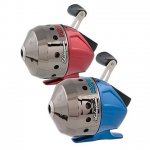mtthwnvk
Picture-Taker // Fish Scare-er
What's the point of WTS designation if you're only doing it on a portion of a stream?
I understand if the state designates a portion of a stream if there are impoundments but I fish on a WTS section of a stream that directly connects to a section that is not WTS and gets stocked.
I'm not complaining, but I guess it just doesn't make sense if you're stock half a river that has access to the other half aren't you kind voiding the WTS aspect of it?
I understand if the state designates a portion of a stream if there are impoundments but I fish on a WTS section of a stream that directly connects to a section that is not WTS and gets stocked.
I'm not complaining, but I guess it just doesn't make sense if you're stock half a river that has access to the other half aren't you kind voiding the WTS aspect of it?

